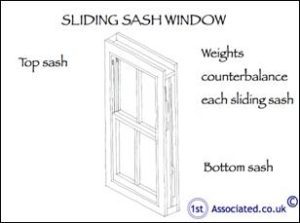Charles Brooking is a fascinating and knowledgeable collector of architectural detail, The Brooking Collection of Architectural Detail, and as Surveyors we find his lifelong quest to collect British building details unique, informative and valuable and a collection that must be kept intact for years to come. If you need help and advice with regard to building surveys, structural surveys, structural reports, engineers reports, specific defects report, dilapidations or any other property matters please free phone 0800 298 5424.
The following is one of a series of interviews with Charles Brooking, Historic and Listed Buildings Detail Expert, The Brooking Collection of Architectural Detail and a Surveyor where we have recorded his comments and various aspects that have affected windows and doors and other collectibles. The interviews outline how his collection started and built over the years and gives an insight into the amazing architectural features housed in his fine collection.
Surveyor: In your first rescued sash window what sort of glass would have been in there?
Charles Brooking : It would have broad sheet cylinder; the cheaper type of glass of the later Victorian period, slightly wavy, not Crown glass, but interesting a lot of it had survived.
Rescue defined
Charles Brooking defines a rescue as saving a window or door or staircase that would be doomed.

Charles Brooking was a pioneer in the rescue of architectural detailing as many years ago it was very much considered a strange and an unusual past time to want to rescue old parts of buildings with everything new and shiny being so important.
Surveyor: Could you just briefly give us the history of glass?
Charles Brooking : Well, it's quite a big subject, but of course, and without an illustration, the early cylinder glass, which is not the broad sheets glass, the early cylinder glass was blown into a cylinder and then it was later cut down its length with the cylinder opened up and the glass allowed to cool over a heated surfaced, just so it's flattened out and was very sort of uneven. In the late 17th Century, although there was Crown glass about earlier than that, the use of Crown glass became very widespread because it was developed in France and French glassmakers popularised the use Crown glass.
Surveyor: How did Crown glass differ?
Charles Brooking :
Crown Glass

Basically, Crown glass was blown, it's hard to describe without drawings, it was blown into on the end of, I suppose, a glass blower's pipe into a lump and that was spun until it actually formed a very large disc that could become quite large and they basically formed a plate of glass, with a sort of pond in the middle, which is the actual bullion. The glass when that cooled down was cut out of this circle of glass and that's why you had the line.
Plate glass was around, but it was hand polished; very expensive, and it wasn't until the 1830's that the larger sheets of broad glass were developed.
Surveyor: When did Plate glass start?
Charles Brooking :
Plate Glass

Plate glass was developed, certainly around in the 17th Century, it was used for mirrors and it was hand polished, but the process; and this is something I'm not terribly au fait with, but there were methods of producing cheaper plate glass. The tax came off plate glass in the 1840's, and broad sheet glass, with methods introduced, which could produce much larger sheets. This superseded Crown glass and became, there were various qualities, available from the 1830's onwards. Crown glass went on being made, but really died out almost, it was still being made for some work in the 1930's but the art has been lost now.
See our articles on
Glass
Sliding sash windows
Window and the Great Fire of London
I wasn't really aware of glass at this stage in my rescuing and growing collection of architectural details but I realised that it would be nice to have some original glazing. Anyway, this window was glazed up and it was just another learning curve, because I also discovered the important archaeology of nails and fixings. There were nails in this window, much to my horror, I wasn't quite sure of its age, possibly 1870's, and this worried be because I thought, well, if they had wire cut nails it couldn't be 1870's. In fact wire cut nails were coming in, in France they had them earlier, but they were developing and introduced around that time, and oval nails. However most nails were cut or wrought iron cut nails, stamped out of a sheet and wrought iron nails, but that's another study! Today I've got a very large collection of wood screws and nails.
These are my findings on glass but there is some controversy over some of the dates. It will be interesting to see what the experts say about Crown glass, cylinder glass and the improvements in glass making that were made in the 1830's, e.g. broad sheet and plate glass and the question of tax. This is tax on glass, because glass was taxed by its weight, this is not the window tax. They are important things, and it would be nice to see if there are any new facts that come to light.
Surveyor: So your architectural detail collection continued to grow?
Charles Brooking : Yes, I spent a long time going through the development of the collection, mainly because the early sites in Guildford, Surrey, but to precise the whole thing, it's not easy in a nutshell, I went on through various mutations in the late 60's, early 70's. I spread, because of pressure from my parents and other people, into antiques, but deep down I knew architectural history was my main passion, and particularly building details. I had lots of influences from antique dealer friends, my tutor finished in 1969 and having taken a marvellous holiday with him; a trip around Bath, the Midlands, visited Kenricks in West Bromwich , being shown around by the Managing Director.
Surveyor: Who are Kenricks?
Charles Brooking : Kenricks are the large producers of Victorian architectural ironmongery and other things, like hollow ware and flat irons, trivets, kitchenware etc.
When we took this holiday that really inspired me to try and cover the whole country and include regional variations. Meanwhile, I came back to, having had the threat that if we allow you to go away with your tutor on this holiday you've got to come on the family holiday to Spain, which meant sitting on a beach for hours, which was not my idea of fun! I never got to see Barcelona, which broke my heart on the holiday of '69 as my parents wanted to relax on the beach.
I went on building up my collection from the Guildford sites and in 1971 I started going up by train to other towns, such as Redhill, Brighton, Aldershot, and places like that, and gained a further knowledge.
My first London rescue was in 1974/75 by the West Strand improvements. The collection grew.
References:
TheBrookingCollection.com
DartfordArchive.org.uk
IHBC.org.uk
ProjectBook.co.uk
Independent Surveyors
If you truly do want an independent expert opinion from a Surveyor with regard to building surveys, structural surveys, structural reports, engineers reports, specific defects report, dilapidations or any other property matters please contact 0800 298 5424 for a Surveyor to give you a call back.
Commercial Property Surveyors
If you have a commercial property, be it leasehold or freehold, then you may wish to look at our Dilapidations Website at www.DilapsHelp.com and for Disputes go to our Disputes Help site www.DisputesHelp.com .
We hope you found the article of use and if you have any experiences that you feel should be added to this article that would benefit others, or you feel that some of the information that we have put is wrong then please do not hesitate to contact us (we are only human).
All rights reserved
The contents of the website are for general information only and is not intended to be relied upon for specific or general decisions. Appropriate independent professional advice should be paid for before making such a decision.
All rights are reserved the contents of the web site is not to be reproduced or transmitted in any form in whole or part without the express written permission of 1stassociated.com

